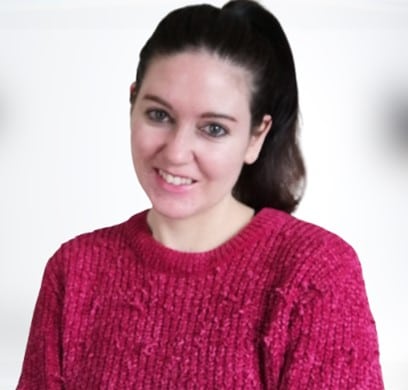
These findings are concerning, because the right mental health support can make a big difference in the lives of Autistic adults (Chan & Doran, 2023). Mental health services are among the services most commonly accessed by Autistic adults in both countries like the U.S., and here in New Zealand (Evans et al., 2021). There is a desperate need for mental health services that are meaningful for Autistic people, and especially for practitioners who understand autism and adapt their practice for Autistic clients, writes researcher Sara Mayer.
If you are an Autistic person looking for mental health support or you are trying to help an Autistic person access mental health care, your best bet is to find a neuro-affirming (or autism affirming) therapist. A neuro-affirming therapist will be someone who accepts you as an Autistic person without trying to reduce or change your Autistic traits. You can identify a neuro-affirming therapist by asking them or finding out about their beliefs and understanding of autism.
Rather than seeing autism as a disease or disorder that needs to be cured, neuro-affirming service providers understand autism as a form of neurodivergence—a difference among many differences in the way human brains work. According to the neurodiversity model, autism is simply a unique way of thinking, processing, communicating, and perceiving the world—a natural form of diversity that has intrinsic worth and value. It exists alongside many other ways of being in the world, some more common than others.
Instead of trying to ‘fix’ the Autistic person, neuro-affirming services and supports will focus on improving access and quality of life for the Autistic person as they are. Among other things, this will usually involve helping the person access social environments where they feel supported and accepted—even if this is just within the therapeutic setting.
The table below shows the difference between belief systems where autism is seen as a disorder that needs to be cured, and belief systems that emphasise the social environment around the Autistic person (social model of disability). Neuro-affirming therapists will acknowledge the social model of disability.
Table 1. Medical model versus social model of disability
| Medical model | Social model |
| Person is disabled by brain/body deficit, dysfunction, or disorder | Person is disabled by societal attitudes, environment (accessibility), and context |
| Disabled person is defective, in need of fixing or curing | Disabled person may need accommodations or support, but not repair |
| A “normal” or “typical” body/neurology is the end goal, the metric upon which others are measured | Body/neurology differences are valued; disability is viewed as part of human diversity |
| Inclusion is accomplished through assimilation – the disabled person must conform to the abled society for acceptance | Inclusion is societal responsibility; accommodation and acceptance of disabled individuals enriches society as a whole |
| Disabled person is viewed as less capable in making decisions and offered less autonomy | Disabled person should have agency, autonomy, and self-determination |
| Disabled person must rely on other for help and caretakers make decisions for them | Disabled person is valued as a human being who plays active role in their care and can make their own decisions |
Note 1 A version of this table originally appeared in the accompanying PowerPoint for Neurodiversity as cultural competency: Three autistic SLPs walk into an ASHA convention… presented by Crow et al. (2021). This table is taken from Gaddy & Crow (2023).
Here are a few tips to help you work out if a therapist is neuro-affirming:
- When you first make contact with the therapist, ask them about their past experiences with Autistic, ADHD, or otherwise neurodivergent clients.
- Ask when and where they learned about autism.
- Ask how they would describe autism.
- Ask what approaches they would use in therapy, and how these could be modified to suit you as an Autistic person.
- Ask if they will leverage your strengths and passions as an Autistic person .
- Ask if they will provide practical and achievable steps to follow.
- If applicable, tell them you would benefit from a trauma-informed approach with an emphasis on relational safety.
- Ask them about their knowledge of Autistic characteristics that might affect the therapeutic process such as alexithymia, interoception challenges, and pathological demand avoidance (PDA). What would they do to accommodate challenges in these areas?
- Ask them if they network or work with other psychologists who work with neurodivergent clients, and whether they attend trainings such as the “Neurodiversity and Trauma” workshop in Wellington (2023), or similar.
Although therapists will vary in their background and experience of autism, the key thing you want to look out for is whether the therapist is willing to adapt their practice to support your needs as an Autistic client. Validation is a central component of any therapy, and above all else, the therapist you choose needs to be someone who can validate and affirm your view of the world. The therapist may not think in the same exact way that you do, but if you can find someone who can listen to you openly, validate your feelings, and encourage you to develop self-compassion and self-care, you are well on your way to finding neuro-affirming care.
Therapists who use trauma-focused approaches may be especially well placed to support Autistic clients, especially those with PDA or demand avoidant traits. Autistic adults with PDA have emphasised the importance of building trust and safety, noting that PDA is associated with attachment trauma, higher than usual levels of anxiety, problems with emotional regulation, other forms of trauma, and intolerance of uncertainty (Kildahl et al., 2021). Trauma-focused approaches should emphasise building a strong and trusting relationship, recognising and responding to anxiety, supporting the client to regulate their emotions in ways that suit them, and adapting to the needs of the person who is receiving the therapy. These pointers are taken from the book PDA in the Therapy Room, by Raelene Dundon (2021). Dundon has written several books and resources on the topic of PDA.
Even if you do not identify with PDA, it is likely that you will still benefit from trauma-focused approaches as an Autistic person. Other promising therapies for Autistic clients include:
- Modified Cognitive Behavioural Therapy (CBT)
- Acceptance and Commitment Therapy
- Eye Movement Desensitization and Re-Processing Therapy
Are you a therapist that wants to learn more about neuro-affirming care? Read our article A professional’s guide to autism-affirming care – Altogether Autism.
References
Brede, J., Cage, E., Trott, J., Palmer, L., Smith, A., Serpell, L., Mandy, W., & Russell, A. (2022). “We Have to Try to Find a Way, a Clinical Bridge”- autistic adults’ experience of accessing and receiving support for mental health difficulties: A systematic review and thematic meta-synthesis. Clinical Psychology Review, 93, https://doi.org/10.1016/j.cpr.2022.102131
Chan, D. V., & Doran, J. D. (2023). Mental health counseling is rated as most helpful by autistic adults: Service perspectives in adulthood. Autism, https://doi.org/10.1177/13623613231197446
Dundon, R. (2021). PDA in the Therapy Room: A Clinician’s Guide to Working with Children with Pathological Demand Avoidance. Jessica Kingsley Publishers.
Evans, K., van der Meer, L., Eggleston, M., Taylor, L., et al. (2021). A Survey of Autistic Adults from New Zealand on the Autism Diagnostic Process During Adolescence and Adulthood. Journal of Autism and Developmental Disorders. https://doi.org/10.1007/s10803-021-04983-0
Gaddy, C., & Crow, H. (2023). A Primer on Neurodiversity-Affirming Speech and Language Services for Autistic Individuals. Perspectives of the ASHA Special Interest Groups, 8(6), 1220-1237.
Ghanouni, P., & Quirke, S. (2023). Resilience and Coping Strategies in Adults with Autism Spectrum Disorder. Journal of Autism and Developmental Disorders, 53, 456–467. https://doi.org/10.1007/s10803-022-05436-y
Kildahl, A. N., Helverschou, S. B., Rysstad, A. L., Wigaard, E., Hellerud, J. M., Ludvigsen, L. B., & Howlin, P. (2021). Pathological demand avoidance in children and adolescents: A systematic review. Autism, 25(8), 2162–2176. https://doi.org/10.1177/13623613211034382



